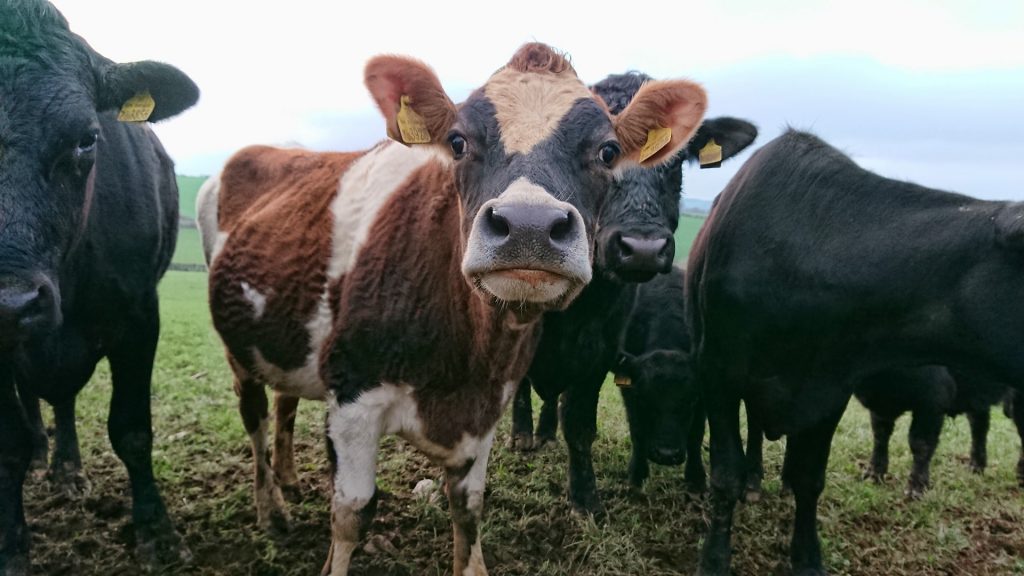Against the commodification of land, Chris Blake argues we need to empower communities to make decisions about their place.
Everything comes back to land. Since the first modern humans, we have managed land to provide us with four essential yields: food, energy, timber, and shelter. These four yields are as important today in our global, technological society as they were to hunter gatherers.
How we manage land has a profound impact on all of the species that share the Earth with us. Ten thousand years ago, a global human population of a few million was enough to precipitate the extinction of most of the megafauna. Today, as the population approaches eight billion, we are precipitating the sixth mass extinction because of the choices we make about how we manage land.
Land management decisions are being taken further and further away from the locality. Residents have gradually been excluded from the decision-making process.
This crisis is well understood. The proposed solutions are for the most part unrealistic – we are still waiting for effective regulation or a sudden change in consumer behaviour. We fail to acknowledge the fundamental economic truth behind today’s crisis – our own, and our governments’ obsession with cheap commodity prices. The lure of cheap bread, cheap energy, cheap commodities, ignoring the true cost.
Most commentators focus on how we manage land. I want to focus on who gets to make decisions about how land is managed? Whose values inform those decisions? The politics rather than the geography or the economics of land management. Changing who makes these decisions may just give us a chance to repair the damage we have done over the last seven decades of the great acceleration.
Land management decisions are being taken further and further away from the locality. Residents have gradually been excluded from the decision making process. We have marginalised the values of the people with the strongest connection to place – those with the largest stake in the long-term health of the landscape.
It is vital that we re-empower local people to exercise power over how land in their locality is managed. We need to trust the values of communities and not the values of the market to find a solution to the climate, nature, and social emergencies we face.
Gofod i drafod, dadlau, ac ymchwilio.
Cefnogwch brif felin drafod annibynnol Cymru.
To illustrate my point, I am going to focus on a town, any town. A town you may recognise from your own locality. Let’s start with the farmland that surrounds the town. Most of the farms are still family-owned, as they have been for generations, although there has been a gradual move to fewer, larger holdings. Surely the decisions about how the land is managed rest, as they always have done, with the local farmers? But each farm has to meet a cost of production that is set by the global market. Matching that production cost dictates a land management strategy. Add in cheap carbon, cheap chemicals, and cheap capital and you get today’s intensive agriculture. A system of food production that has been disastrous for water quality, soil health and biodiversity, and many rural communities. The links between local community and farmer are getting weaker, as James Reebanks observes in English Pastoral, the farmer is no longer exchanging produce, or even conversation, with the local community.
Some farms have started to invest in intensive chicken production. The farm ownership may not have changed but the land management strategy is now being dictated by the corporation that enabled the multi-million pound investment – every aspect of the process honed to ensure enough profit to service the debt. That corporation could well be in the Midwest USA and it is the corporation’s values, with no stake in the long-term health of the farm or the community, that dictates how the land is managed.
The land is managed to provide the four vital yields of food, energy, timber, and shelter without any reference to the values of the local community.
A similar story can be told about timber production. The higher ground in the distance was planted with forestry in the 1960s. The land is publicly owned, the forest management delegated to a public agency. But, as a matter of government choice, it is managed by the economics of the global market. This choice results in the close-packed plantations of a single species cropped on a fifty-year cycle. Neither the felling nor the processing of the timber provide local employment. The decisions about the replanting are made at the agency’s head office without meaningful input from the local community.
In the distance, poking above the tops of the spruce trees, you can see the tips of the turbines from the wind farm. It was developed a decade ago by a global wind corporation headquartered in another continent. The profits go to shareholders and the overseas project finance partners. Most of the people in the town accept that the turbines are needed, but apart from a modest “community fund”, none of the development income stays within the community. The decisions about the scale and the location of the turbines are taken in Westminster and the corporate headquarters.
The town continues to grow – new housing estates surround the town. The housing has been designed to maximise the profits for the developer – one of as handful of companies that now dominate housebuilding. The four-bedroom ‘executive homes’ maximise return to shareholders by reducing the size of the rooms and gardens, the thermal insulation standards are designed to the legal requirements (something the developer lobbied hard to keep to a minimum). Even the ‘affordable’ housing is out of reach of local people. The location, design, price, and the quality of the housing are being driven by shareholders’ interests.
In each case we can trace how the locus of decision-making has moved away from the town and its residents. The land is managed to provide the four vital yields of food, energy, timber, and shelter without any reference to the values of the local community. The complexity of residents’ values and priorities reduced to a, usually binary, decision in the voting booth – not that no political parties of any hue have been able to resist the market forces that have destroyed habitats and communities.
We have to give communities power to deliver on those local values.
So how do we include local values in land management decisions? The answer, of course, is to engage in meaningful conversations with residents. And I don’t mean box-ticking consultations about plans developed elsewhere. I mean conversations about the past, the present and what the landscape should look like in 100 years. The place of nature, the response to climate change, the landscape and its connection to the community. But conversations are not enough. We have to give communities power to deliver on those local values.
In Scotland, communities get the power to deliver on local values by owning land. Over 400 communities, together, own 3% of Scotland. Ownership gives them the ultimate power to determine how the land is managed.
Syniadau uchelgeisiol, awdurdodol a mentrus.
Ymunwch â ni i gyfrannu at wneud Cymru gwell.
But land ownership is not the only way to get community values enshrined in the land management strategy. I have been working in the South Wales Valleys on the Skyline project. Skyline supports local communities to have their values and dreams reflected in the long-term management strategy of the forest. The forest is owned by the Welsh Government and managed by a public agency, Natural Resources Wales, who have had the courage to allow the community to co-design the future of the forest. A co-produced forest strategy that integrates professional forestry practice with the wishes of the community. A forest that will provide paths accessible to everyone, a forest school, a performance space, a 200 Ha nature reserve, renewable energy generation, food from agroforestry, attract tourists, provide jobs and income for local people and, supply wood fibre for industry produced to international standards.
We need to listen to and empower communities to ensure that their values are expressed in the way land is managed. Skyline has demonstrated what we probably always knew: that local people are the best long-term guardians of their environment. That they can be trusted to balance current needs with the needs of future generations. The values of local people will balance the competing challenges of economy, nature, and society far better than the values of distant shareholders. So let’s embrace community land ownership, community supported agriculture, local food supply chains, community land trusts, landscape co-design, community-owned renewable energy generation. Our futures may just depend on it.
Chris Blake
The Green Valleys CIC
All articles published on the welsh agenda are subject to IWA’s disclaimer.





